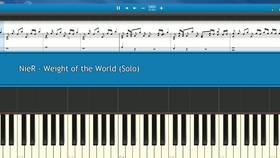Title: The Making of a Tie Sample: From Design to Creation
The making of a tie sample is a meticulous process that involves careful consideration of design, material selection, and craftsmanship. In this article, we take you through the steps involved in creating a high-quality tie sample, from the initial design concept to the final creation. We explore the importance of choosing the right material, such as silk or wool, and the role of pattern and color in creating a visually appealing tie. Additionally, we discuss the role of modern technology in tie production, including the use of digital printing and 3D modeling. Finally, we consider the role of craftsmanship in ensuring the quality and elegance of the finished product. This article provides a comprehensive overview of the process involved in creating a tie sample, highlighting the importance of attention to detail and the role of each step in achieving the desired end result.
In the world of fashion, ties have long been a symbol of elegance and status. They are not just a piece of clothing; they are a reflection of one's personality and taste. The process of creating a tie sample, therefore, is much more than just making a physical product; it is about transforming an idea into something tangible and wearable.
The first step in the journey is the design phase. Here, the designer sketches out the shape, pattern, and color scheme of the tie. They might be inspired by a number of things, including cultural elements, nature, or even the latest trend in fashion. The design also takes into consideration the occasion for which the tie will be worn, as well as the preferences of the intended wearer.
Once the design is finalized, it is time to move onto the manufacturing phase. This involves selecting the right material for the tie, which is usually a fine quality silk or synthetic fabric. The material should not only be aesthetically pleasing but also comfortable to wear. It is also at this stage that decisions are made regarding the size, shape, and fit of the tie.

The next step is pattern-making, where a template is created to ensure that the tie will be symmetrical and balanced. This template is then used to cut out the fabric for the tie, ensuring precision and consistency in size and shape.
Following pattern-making, the actual sewing process begins. Here, special attention is paid to detail, with skilled seamstresses carefully stitching the fabric together to create the final product. Special techniques are often employed to achieve certain design elements, such as intricate patterns or textures.
Once the sewing is complete, the tie sample moves onto the quality control stage. This ensures that all aspects of the tie meet the required standards, from the symmetry of the pattern to the strength of the stitching. Any defects are immediately rectified, ensuring that only the best make it to the market.

Finally, the completed tie samples are ready to be showcased to potential buyers or worn as a statement piece. They have gone through a series of meticulous processes, each one carefully considered to ensure that the final product not only looks great but also feels great and is of exceptional quality.
In conclusion, the making of a tie sample is a highly skilled and meticulous process that requires attention to detail and a deep understanding of fashion trends and wearer preferences. It is this attention to detail and quality that sets apart a great tie from an ordinary one, ensuring that it remains a timeless symbol of elegance and status for years to come.
Articles related to the knowledge points of this article::
The Art of Mens Tie Etiquette: A Guide to Wearing a Tie at a Wedding
How to Tie a Childrens Rope Tie - Illustrated Guide
Title: The Mysterious Color Choice of Hospital Leaders: A Deep Dive into the World of Tie Colors
Title: Can Women Wear Ties with Suits: A Comprehensive Guide



